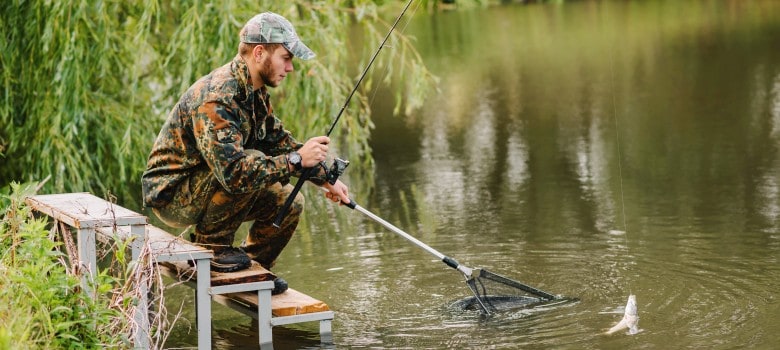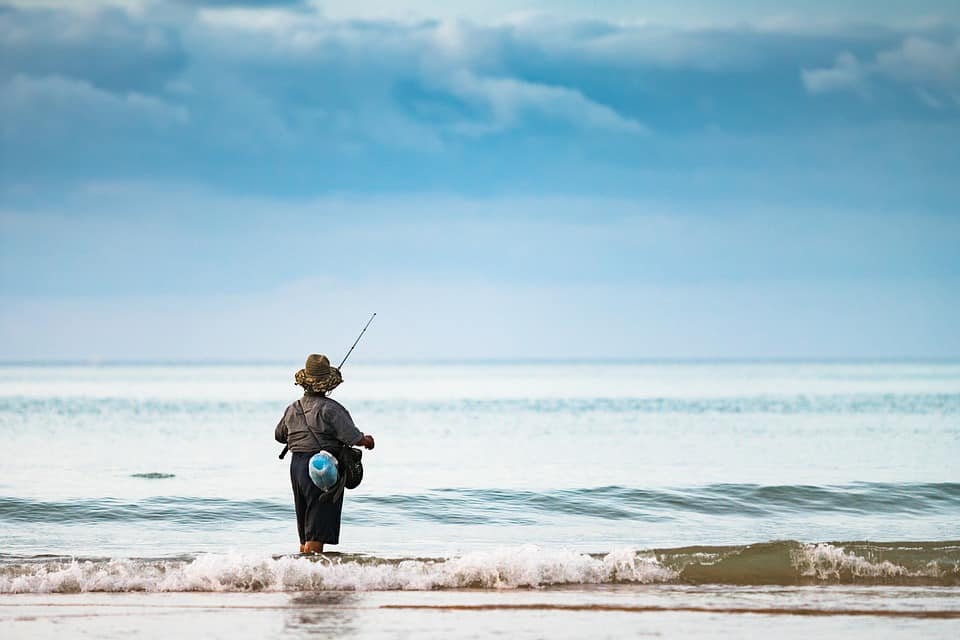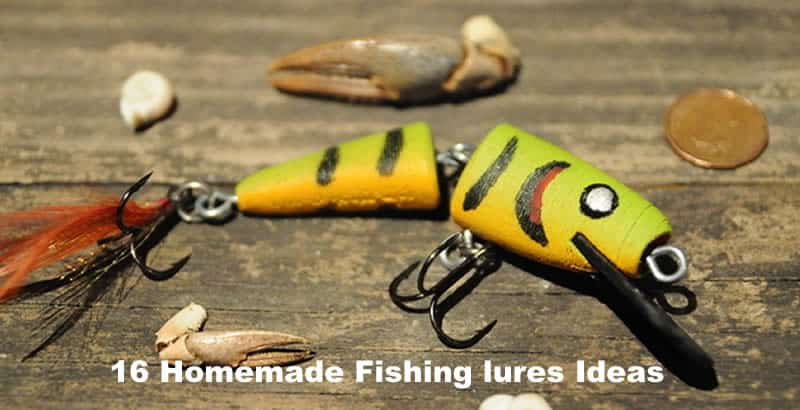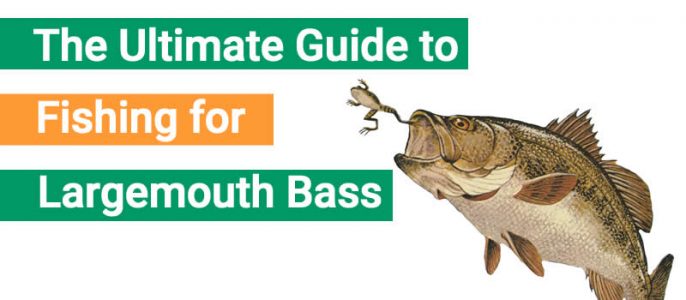If you buy via a link on this page, we may receive a commission, at no extra cost to you.Learn more
You have to catch anything until you reel the fish in successfully. Many novice anglers think that this is the easy part. Sadly, this is not true.

That’s why learning how to reel in a fish is a crucial technique to master. I will share with you my tried and tested method to reel fish. It works with fish of any size. It will only take more iterations as the fish is heavier and more aggressive.
Here you have a summary of the steps:
- Hook the fish
- Point the tip of the rod toward the water
- Lift the rod to your chest
- Start reeling the line as you lower the rod
Repeat steps 2 to 4 as needed until you get the fish out.
There are a couple of things that you must do in between each step. Stay with us a little longer so you don’t miss anything.
How to Set the Hook Properly
To reel any fish in, you must first hook it. So any technique must start here. Setting the hook is an art in its own right.
The pivotal point is to distinguish what is a bite and what’s not. I’ve talked extensively about it here. Once you know that a fish is biting, you must wait until you feel the slight pull of the fish swimming away with your bait.
At this point, you must yank the rod to your shoulder. The movement must be swift and in a single motion.
Reeling a Fish the Right Way
Now that the fish is hooked, we must concentrate on reeling it in. The first reaction of many fish is to swim away when hooked. It is important not to reel immediately after, as the line is more likely to snap. That’s why you must:
- Let the reel and rod work. It is their time to rise and shine. Point the tip toward the water until the rod is around 45 degrees. The goal here is to keep the line and the rod aligned.
Allow the fish to swim. But keep an eye out on how much line is left on the spool and where the fish is swimming. You might need to stop it sooner if it is near sharp objects or is little left on the reel.
- The fish will inevitably swim slower or even stop. Now is your time to work. Lift the rod to your chest. You might not be able to fully lift the rod if the fish is too heavy. Don’t worry.
One common mistake here is to always try to lift the rod until the tip is facing the sky. This just puts unnecessary strain on both the rod and reel. I recommend starting slow. Lift the rod midway through. Don’t reel just yet.
- Now it is time to start reeling the line as you lower the rod. The timing is everything here. Reel too fast will increase the strain on the line, and too slow will create slack. The key here is to keep the line tight.
Rinse and repeat once the tip is facing the water again.
It is a simple process. But it requires a lot of attention. You must keep an eye on the rod and the other on the fish. You see. Sometimes the fish might swim towards you, creating slack on the line. As a result, the fish is more likely to get loose. You must reel the line fast and keep the tip up.
Fish will instinctively run for cover. Keep an eye out for sunken trees, weeds, piers, and similar.
There is another technique that only works if you are fishing from the shore or a dock. It consists of moving backward instead of lifting the rod. Reel the line as you walk to the starting position, everything else remains the same.
I only take this approach if the fish is way heavier than my setup. This way, I don’t risk my rod.
What Do I Do When the Fish is Out?
The fish will eventually get out of the water after some iterations. There are several approaches to secure it. The first and most common is to take the fish out and direct the fish inside the boat or to the shore. This only works with small to medium-sized fish.
Some people use a net to secure the fish. I use this approach when fishing from my kayak as it keeps the fish from thrashing around. I know some people grab the line with bare hands instead. I don’t recommend it as the line can cut your fingers. Always wear a glove.
Pump and Reel
The method we just learned is known as the Pump and Reel. It is a simple 4-step process. The goal is to keep the line as tight as possible. Just avoid pumping the rod too far back. It will only increase the chances of it breaking.
You must be patient. Let the rod and reel do their jobs first. Pump the rod back. Reel the line as you lower the tip. The number of iterations depends on the fish’s size and aggression. But it will give in eventually!




